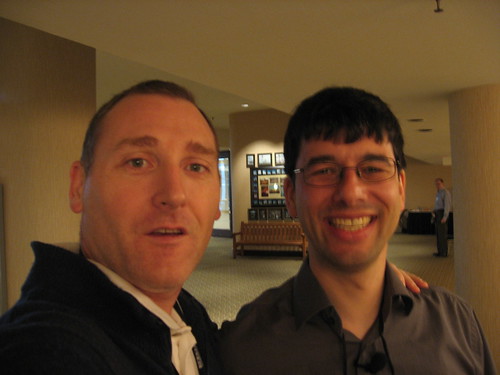Open Source Survey: About OpenLogic Census
Six months ago OpenLogic announced the Open Source Census, an initiative to quantify the global use of open source in enterprises. On the 16th of April OpenLogic eventually launched the collaborative project to collect and share quantitative data on the use of open source software, and recently announced the first results.
 Complete Lego Census by Cavalier92
Complete Lego Census by Cavalier92
- Ubuntu is the top Linux distribution on machines scanned to date – Various versions of Ubuntu accounted for almost 50% of all Linux distributions installed on participating machines. Debian accounted for 14%; SUSE Linux accounted for 12% of install base; Fedora Core 7%.
- International interest in Census – 66% of machines scanned in the first two months were outside the U.S. U.S. participants represented about one third of participants. Active global participation in the Census came from areas such as Europe, Canada and Australia.
- Top open source packages – The top 5 installed open source packages were in order were, Firefox, Xerces, Zlib, Xalan and Prototype.
I asked my twitter and blog buddy Stormy Peters , Director of Community and Partner Programs at OpenLogic, some feedback about the Census initiative. OpenLogic is an open source firm providing services to help customers to manage open source governance, taking advantage of the frequent lack of open source corporate actors. Apparently launching this survey OpenLogic is doing Forrester, Gartner or IDC job (the last is one of the sponsor of the initiative).
Why OpenLogic decided to launch an opt-in survey?
As OpenLogic worked with large enterprises, we realized that companies did not know how much open source software they were using. To help address this problem, we developed an open source tool, OSS Discovery, to allow companies to inventory the open source on their systems. As we started working with customers to conduct these inventories, we felt that it would be useful to aggregate this data in an anonymous way. From this experience, The Open Source Census was born. Most research firms use traditional surveys (of software vendors or of end users). Unfortunately, these methods are inadequate for open source since it is downloaded freely and companies do not always know how much open source they are using. IDC sponsored The Open Source Census to supplement the data that they get from other research methods.
Traditional surveys, basically done by phone calls to software vendors, simply don’t work: OSS procurement is done by clicking on a download button, most of the times. OpenLogic conducting such a survey sponsored by IDC is definitely a sign of the time.
What can you tell about the OS census so far?
We are happy with the initial response to The Open Source Census with almost 1500 systems scanned as of Jun 30. To date, most of the participants in the Census are individuals scanning and submitting data for one or two systems. This is expected since these participants primarily came from press when we launched The Open Source Census. We are now working to actively recruit large enterprises to scan a sampling of machines. We expect that many of these enterprises will scan hundreds or even thousands of machines. The sponsors of The Open Source Census are currently recruiting enterprises and we expect these activities to pay off in the months ahead as enterprises submit large blocks of scans to the Census.
Enterprises scans will tell us a lot of interesting things, I am not sure Firefox or Xerces will still be in the top ten, though.
Any comment about the reaction to news of Microsoft’s Support of Open Source Census?
From the beginning, we knew that we wanted The Open Source Census to be a collaborative effort – not just specific to OpenLogic. We felt that collaboration was critical to making The Open Source Census successful. Prior to launching The Open Source Census, we began the process of reaching out to a wide variety of participants in the open source community and ecosystem. The list included large platform vendors, commercial open source vendors, open source communities and organizations, law firms and analysts. Because this is an open project, we did not limit or exclude anyone from sponsoring or participating – as long as they agreed with the goals and process for The Open Source Census. We welcome all sponsors who might want to participate and help make The Open Source Census successful.
Beyond Stormy’s diplomatic answer all the fuss around Microsoft’s sponsorship is spreading the word about the open source census, and Matt Asay, Savio Rodrigues and Sean Michael Kerner posts are of help in this respect.
Side effect or not?
About The Open Source Census:
The Open Source Census is a global, collaborative project to collect and share quantitative data on the use of open source software in enterprise. Founded by OpenLogic, the Open Source Census has a number of sponsors including OpenLogic and IDC. The Open Source Census initiative has open source tools designed to scan individual enterprise computers for all installed open source software. The results of these scans can then be contributed anonymously to the Open Source Census, where the aggregate data is published.





Reply